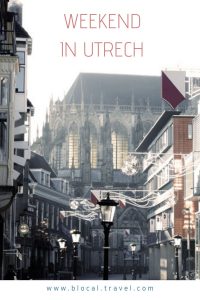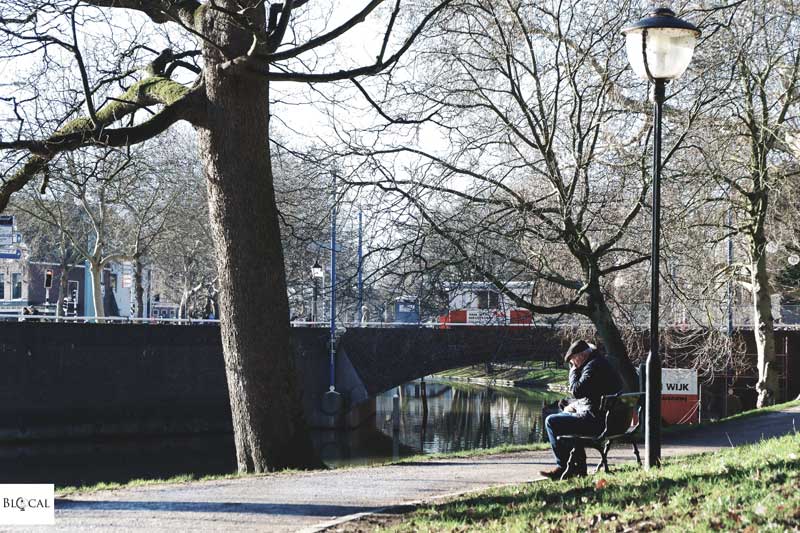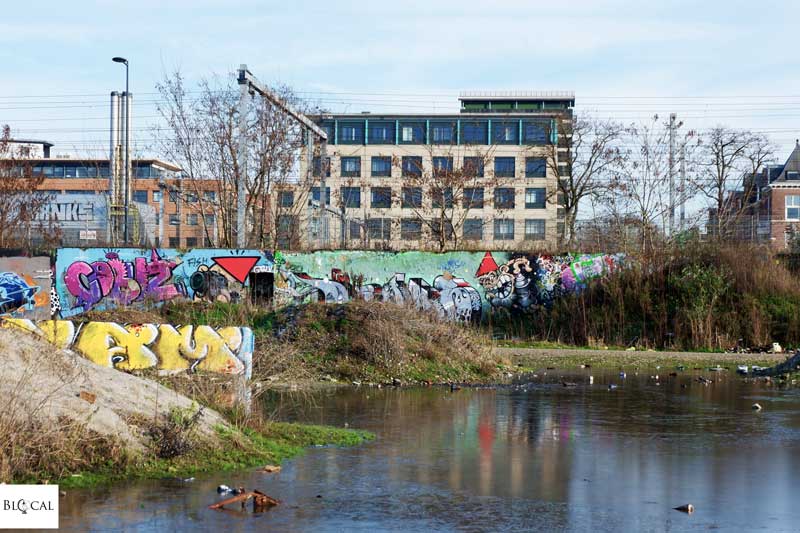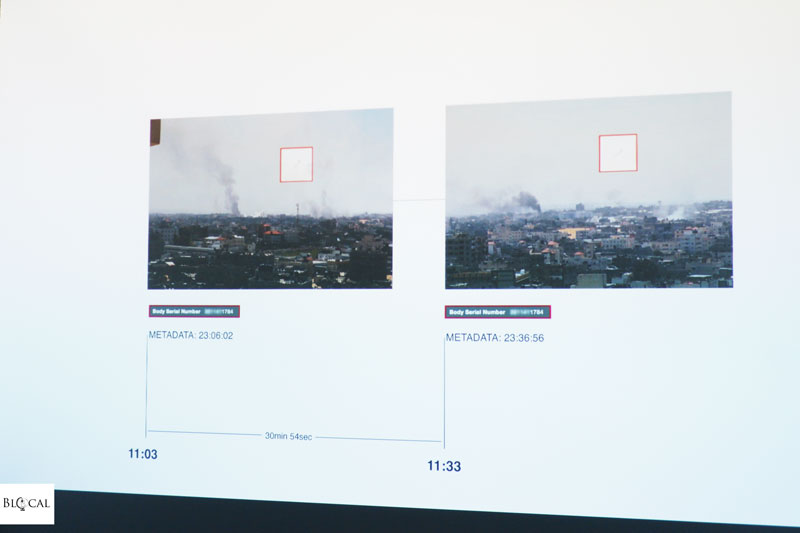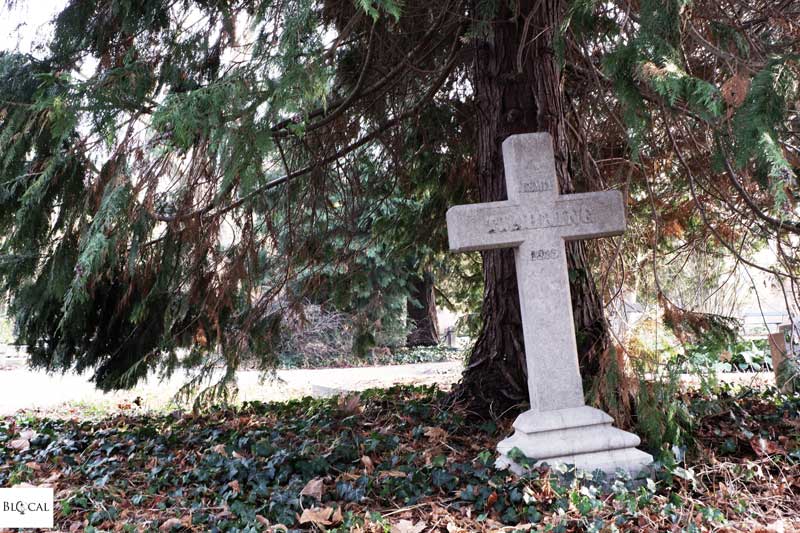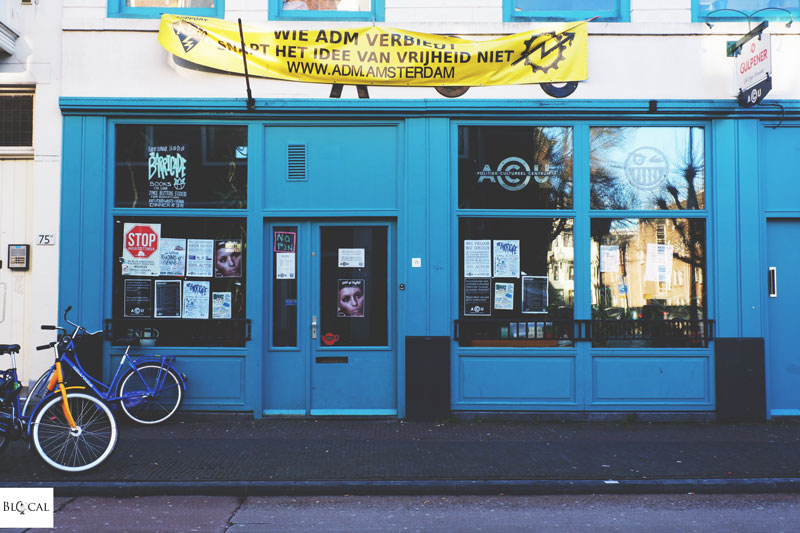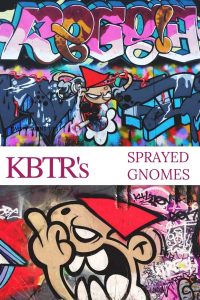Since the moment I first stepped into Utrech from the back of the train station, I felt ‘something different’ hovering in the crisp winter air. It was something I haven’t ever experienced in Amsterdam, something tangible in the streets and – yet – seemingly impossible to pinpoint.
I went to the Hall of Fame and took my first graffiti shots, then headed to the hipster area of Rotsoord. After lunch, I still couldn’t name what was different in Utrecht.

Sure, the city was smaller and more compact than Amsterdam. In fact, no matter what destination I put on Google Map, the answer was always encouraging; only once did the app estimate more than 10 minutes of walking.

Obviously the well-known university of Utrecht attracts a lively, young crowd to the city: pubs and cafés are crowded with students, where lots of cultural activities satisfy their curious minds. However, I’m way over university parties and I definitely can’t say that I miss the bustling cultural life in Amsterdam. So although the student:adult ratio is indeed different in Utrecht, it wasn’t that intangible charm that I was trying to put a name on.
I had my epiphany on the second day, while sipping a Belgian beer on a picaresque canal that looked straight off of a postcard. I was staring at the pointed buildings, which look very similar to the ones in the city center of Amsterdam, when I realized that down in the water there wasn’t the usual traffic jam of touristy boats. Nor were the streets packed with tourists. I glanced around and noticed that menus and all kinds of signs were written exclusively in Dutch.
When I consciously breathed in the non-touristy surroundings, not even the foreign beer could refrain me from feeling – finally, after more than three months – that I am indeed living in the Netherlands.
Weekend in Utrecht > Graffiti in Utrecht: ‘De Grindbak’ Hall of Fame
As I mentioned, my first stop was Utrecht’s Hall of Fame, which is located next to the train station. Every few minutes, a train clanked past the otherwise silent area.


My tentative steps left their marks on the ice, which occasionally was thick enough to get me to the next dune, from which I could take even more photos of the impressive graffiti livening the deserted yard.


Many local artists paint here, although the ubiquitous tag – here as everywhere else in Utrecht – is definitely KBTR a.k.a. Kabouter, which is the Dutch word for ‘gnome’. KBTR is a graffiti artist from Utrecht. His iconic figures can be found all around the city, usually flipping off passers-by or otherwise misbehaving. They began mushrooming around Utrecht in the 2000s – first as figurative elements of larger graffiti pieces and then increasingly solo – and, although KBTR now lives somewhere else, his rude gnomes in red hats still rule the town.
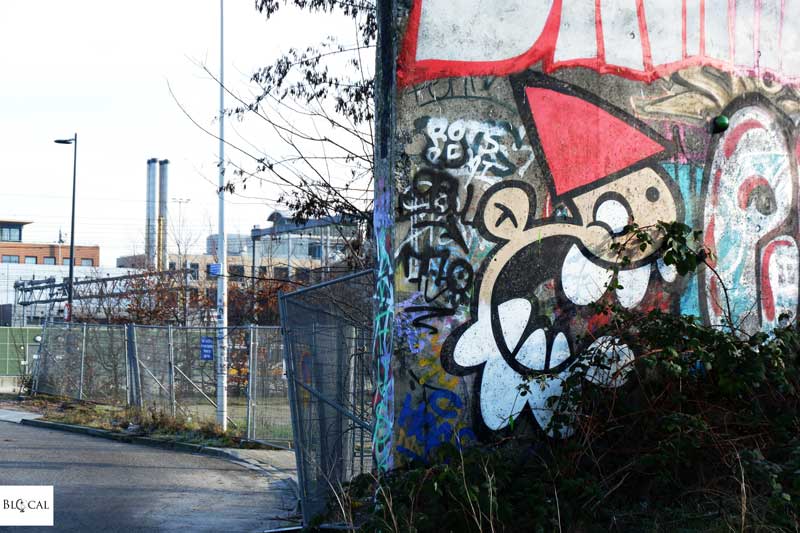


Weekend in Utrecht > Fotodok’s current documentary photography exhibition
“Our lives are increasingly controlled by forces over which we can have no influence, because they are invisible and intangible” is the premise of Fotodok’s latest socially engaged photography exhibition.
“Who’s in control?” explores new narratives of power: algorithms that control our daily lives or even define if our behavior in public spaces, as captured by modern intelligent cameras, conforms to ‘the rule’. In this increasingly automated world, society is at risk because our lives have reached such levels of abstraction that we have lost our grip on the world around us. Each photographer focuses on a different aspect of what this means to society not knowing how science – or better: its applications to technology – functions, in a time when we depend so much on it.
My favorite artwork was “La Grieta (The Crack)”, a series of stories in the form of a graphic novel about the EU borders, where the arrival of asylum seekers causes cracks in Europe’s sense of belonging.
Weekend in Utrecht > BAK’s current politically-driven exhibition
BAK (Basis voor Actuele Kunst) “addresses the social, ideological, and environmental urgencies of the present by combining public programming and exhibition-making with research, learning, and talent development.” Since 2000, BAK is a place where art meets other disciplines on a critical platform for aesthetic-political experiments.
As part of its long-term program “Propositions for Non-Fascist Living” (2017–2020), BAK’s current exhibition presents the socially-engaged work of Forensic Architecture: an interdisciplinary research agency that inquires into various forms of violence infringing on human rights, as well as the rights of nature.
The exhibition “Forensic Justice” is made up of several reconstructions of events through innovative evidentiary methods at the intersection of law, art, politics and the changing media landscape employed in the forensic practice.
Although each piece captures only a small part of ‘the truth’, by synchronizing, combining and cross-referencing all these different media that have documented ‘the actual facts’ – such as CCTV, news footage, still photos, audio traces and metadata – the agency reconstructs a comprehensive account of the events.
Also at BAK, the piece that struck me the most was about immigration (“The Iuventa, 18 June 2017”). A few days after a German NGO boat refused to sign a “code of conduct” that would have limited their rescue activities, it was seized by the Italian judiciary under suspicion of “assistance to illegal migration.” However, by building a unique 3D model with video recorded by the different actors involved, Forensic Architecture proved them to be false accusations, while also showing that the Mediterranean Sea has become a militarized border area where countless migrants continue to lose their lives.
Weekend in Utrecht > Wandering around Tolsteeg Cemetery in Utrecht
Strange as it might sound, I hadn’t planned to visit a cemetery this time, which means that I hadn’t done any research on Utrecht’s cemeteries before going to see the city. Otherwise, I would have known that the cemetery I somehow ended up visiting (known as Tolsteeg Cemetery) has an auditorium that boasts a mural by M.C. Escher.




Despite having missed Escher’s artwork, I loved Tolsteeg Cemetery for its leafy avenues, the ornamental trees, and the unconventional memorial statues scattered around.



Weekend in Utrecht > Mingling with Utrecht’s alternative crowd at ACU
Originally a squat, ACU is a very active political-cultural center fully run by volunteers. I spent both my Utrecht evenings here. On Saturday I attended a concert, while on Sunday I joined the Barricade Kitchen, an anti-food waste event where vegan meals are made out of what would have been otherwise trash. This social dinner takes place every Sunday, alongside the public library, where you can borrow books on anarchism, Marxism, squat culture, and more social themes.
Weekend in Utrecht > My favorite café in Utrecht: Koffie Leute
Koffie Leute is super cool! Not only do they serve the best coffee in town, but they also have a DJ station equipped with many vinyls (a bold selection of Dutch labels and independent Dutch artists), board games, books, newspapers, and Mario Kart.
I stumbled upon the story of this company while doing my research on what to see in Utrecht, and I immediately knew that I wanted to visit a café where beans change according to the season, or where you can grind your own coffee blend (which I ultimately didn’t do, since Koffie Leute’s wide selection of blends was already overwhelming).
I especially loved the homey feeling of this spot: I felt as if I were sipping a coffee in a friend’s living room, a warm feeling that Dutch people would call ‘gezellig’.
(As you might easily guess, ‘gezellig’ is indeed my favorite Dutch word; although untranslatable literally, it stands for something cozy, nice, friendly, warm, and comfortable, according to context).
Weekend in Utrecht > De Utrechtse Boekenbar: a cute bookshop in Utrecht
On the same street, there is also a tiny bookshop with a few tables scattered about, where you can enjoy a coffee. Most of the books are about art and graphics, so I really enjoyed browsing around, while recovering from the cold wind that was raging outside.
Weekend in Utrecht > My favorite pub in Utrecht: Kafé België
Many of you suggested I go to this Belgian pub in the city center (thanks!), so I went there. Their selection of Belgian beers is impressive and, at some point, I’ve also tried the one called ‘Kamikaze’, which is brewed by the Kafé België’s crew.
The atmosphere is nice and friendly. I immediately began chatting with a guy sitting next to me, who told me that his favorite thing to do in Utrecht is walking through the narrow alleys that connect the two main canals, which of course I did as soon as I was finished at the Belgian pub.
Weekend in Utrecht > My very light dinner at Belgisch Biercafé Olivier
Even more Belgian beers, this time inside a former church in the city center of Utrecht. At this point of the evening, I also had to order some food: I opted for the meatballs, which were good although the serving was really small (or I was really hungry… it’s always a matter perspective, and of how many beers you might have already drank).

Weekend in Utrecht > My hipster lunch at De Zagerij
On a canal that runs through Utrecht’s hip area of Rotsoord, there is a hipster restaurant inside the former factory where they once made Pastoe furniture.
The design of the place is more intriguing than the menu: pipes are exposed on the ceiling right above a busy kitchen in the midst of a big open space, while green plants scattered all around stand out from the grey background of De Zagerij’s raw concrete walls.
I warmed up with a comforting pumpkin soup and then ordered some croquettes, which – as far as I know – is the only “Dutch specialty” you can find. Before leaving, I had a last glass of Italian white wine – because yes, I’m still getting over the fact that I now live in a country that doesn’t have its own wines.
Weekend in Utrecht > My organic breakfast at Landgoedkeuken
Walking along Domstraat, I couldn’t help but notice this cozy bistro offering organic meals and products. I came back the next morning for breakfast. While enjoying a delicious quiche and a black coffee, I learnt that all the ingredients used at Landgoedkeuken come from their estate, ‘Mariënwaerdt’. Aside from organic farming, at Mariënwaerdt they specialize in production of cheese and delicacies, which are on sale at the bistro downtown.
Where to stay in Utrecht > EYE Hotel
Disclaimer: I was invited to explore Utrecht by the Utrecht City Concepts network. (However, and as always, all opinions expressed here are my own). They offered me a beautiful room at EYE Hotel, a hip boutique hotel inside a former eye hospital in a beautiful building dating back to the 17th century. I loved the place, especially the beautiful design of the rooms, which are eyesight-themed.


Spending the night in Utrecht proved to be a smart decision. Besides the fact that I could party at ACU without worrying about catching the last train to Amsterdam, it also allowed me to enjoy Utrecht’s streets under the night spell.
As darkness set in Utrecht, the city felt back into its medieval soul. I walked along the quaint canals, which were illuminated by the warm light of old fashioned lampposts, and past the foggy windows of pubs and restaurants, which muffled the convivial laughs coming from inside.
The blackness around was my cocoon; the quiet water in the canals was velvety, and the moon, which was getting ready for the first lunar eclipse of 2019 that night, was the only company I needed while strolling along Utrecht’s cobbled streets.
Enjoy this short travel video from Utrecht!
You can hover over this (or any image) to quickly pin it!
